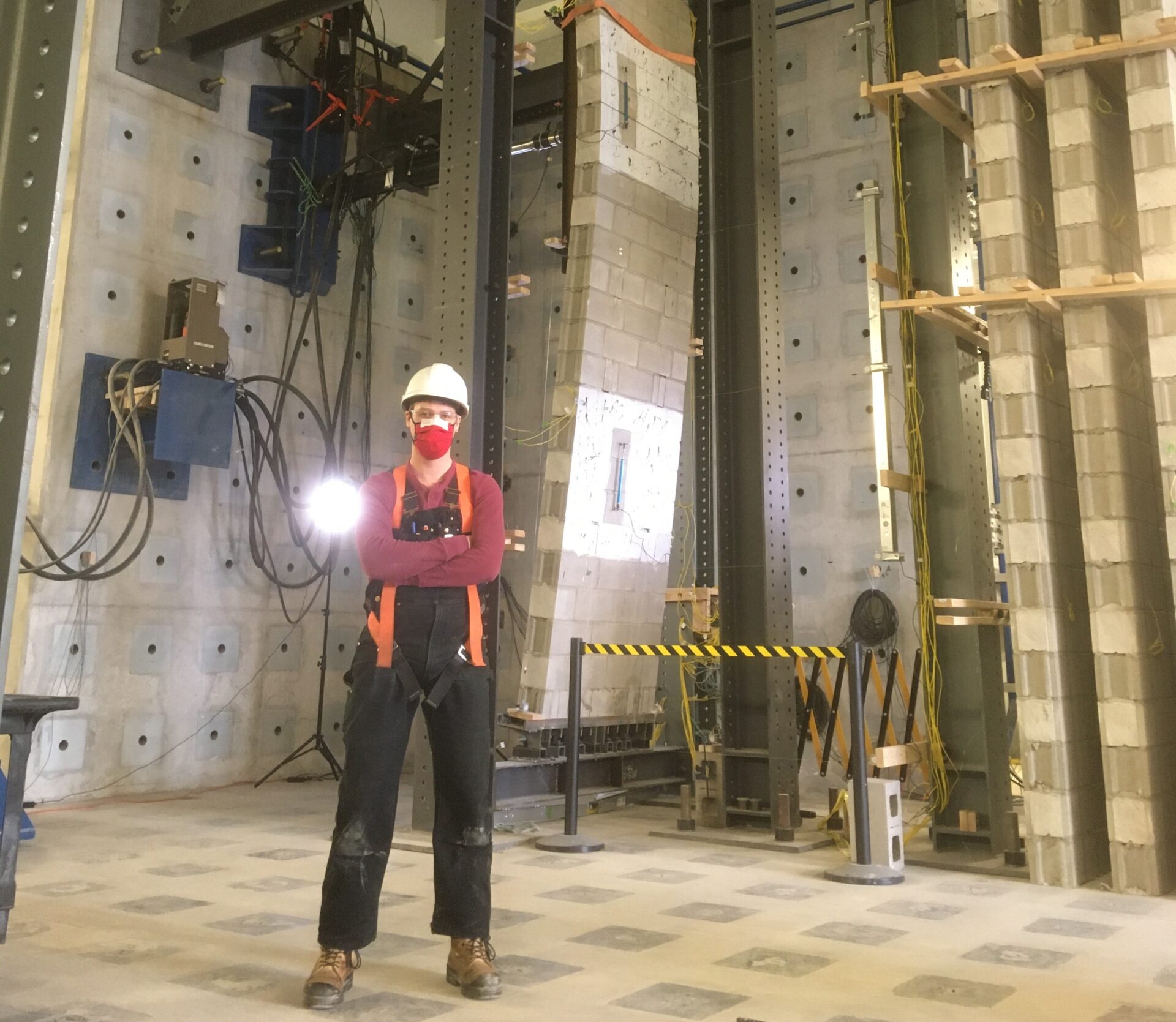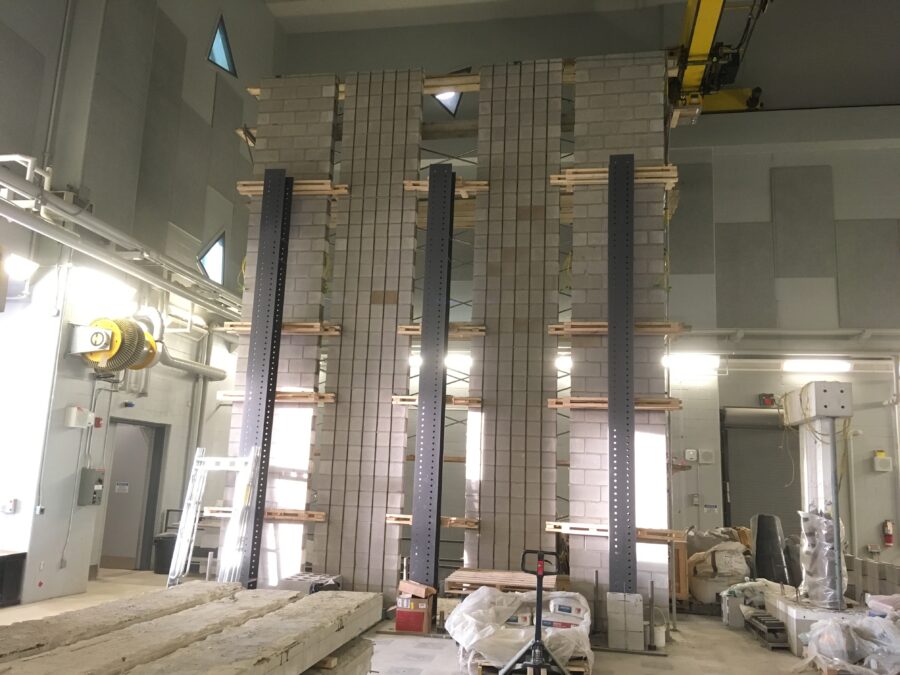Lassonde Grad Student Conducts Full-Scale Test of Masonry Wall
Tags:

Adrien Sparling, a PhD candidate at the Lassonde School of Engineering at York University, is working to make concrete block masonry walls stiffer, taller and safer by conducting full-scale testing and research in the High Bay Lab at the Bergeron Centre.
Sparling’s research is being conducted under the supervision of Professor Dan Palermo in the Department of Civil Engineering and explores the stiffness response of masonry walls, including how different methods of reinforcement impact these characteristics.
The latest test was done on a masonry block wall measuring 7.8 m in height, representing a full-scale test. This size of testing is very rare in academic settings across Canada and is made possible by the infrastructure available at the High Bay Lab in the Bergeron Centre.
The testing procedure represents an important opportunity to develop information that can advise structural standards and building codes in Canada. The 7.8 m wall was constructed by a mason, while Sparling developed and applied novel method of reinforcement. The construction and reinforcement of the four walls that are part of this project took approximately one month.
Once in place and supported, the experimental set-up includes hydraulic actuators, both above and behind the wall, which apply forces that resemble what may occur in high winds. In a building with tall walls, strong winds can cause the walls to bend; if the walls are not stiff enough, heavy loads from the roof can make the bending forces on the wall much larger (picture pushing down on a piece of dry spaghetti).
The new reinforcement process being tested by Sparling puts steel reinforcing bars near the outside surfaces of the wall (Near-surface Mounted, or NSM technique). This makes the wall much stiffer than it would be if the same amount of reinforcement was placed down the middle of the wall, as is done in conventional concrete block masonry construction. The testing process applies different combinations of vertical and horizontal loads on the walls so that the strength, and stiffness of walls reinforced with the new and conventional process can be compared.

“The main purpose of this project is to assess how tall concrete block walls behave under extreme loading conditions. We need to know how much force it takes to break this kind of wall so that we can be sure what loads are safe. Ultimately, our goal is to demonstrate the benefits of using NSM reinforcement for tall masonry walls. The data we produce will also help improve the next round of design standards so that we can use our construction materials more efficiently and safely” commented Sparling.
The current test builds on a past study authored by Sparling, which assessed how near-surface mounted reinforcement can be applied to new masonry construction. In their work, which was published in 2020 in the Canadian Journal of Civil Engineering, the team used 3.2 m masonry walls with conventional grouted reinforcement or near-surface mounted reinforcement. They found that the flexural strength of both walls was similar; however, the stiffness of the near-surface reinforcement walls was twice as high, indicating that the near-surface mounted reinforcement may be a preferable option in tall unsupported masonry walls, such as box stores or commercial warehouse buildings.
The research and testing by Sparling will help to identify potential reinforcing strategies for standard block walls. The work also has potential as an alternative to newer tilt-up walls that are used in many commercial settings. As current Canadian masonry design standards are restrictive to the design of reinforced masonry walls, the work may identify aspects of these standards that can be modified in the future.
Sparling will be conducting 3 more tests over the next 3 months.